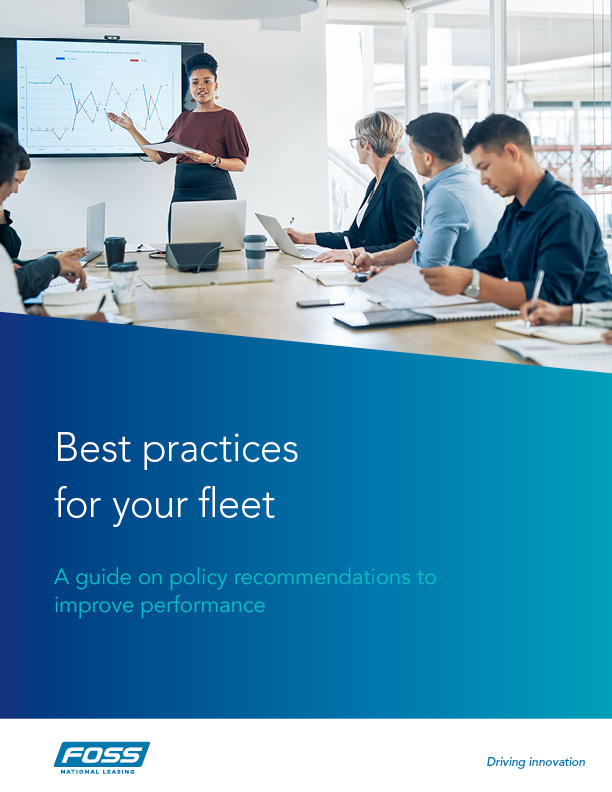
Need to convince your management team to get on board with fleet safety training? You’re in the right place!
In this blog, we’ll talk about why executive buy-in is so important to the success of your driver safety program. We’ll also provide actionable steps you can take to convince management to fully endorse the program, and be actively involved.
Let’s get started!
WHY DO YOU NEED MANAGEMENT BUY-IN FOR A FLEET SAFETY PROGRAM?
One of the most important steps in rolling out a new safety program — or changing an existing one — is securing executive buy-in.
Why is this?
Getting executive buy-in provides clarification of risk and risk tolerance—meaning, what is and isn’t acceptable for the organization and how that affects the company’s overall financial performance.
Senior management has to be committed to making the necessary investments of time and money. They also have to make it clear to all drivers that safety is one of the organization’s top priorities.
This is essential for the health of drivers, and for the success of the organization itself. Buy-in begins at the leadership level and cascades down to an overall company commitment to getting everyone home safely at the end of the day. When combined with increased financial performance, everyone wins.
_0.jpg?width=800&name=fleet-safety-program%20(1)_0.jpg)
WHAT HAPPENS WHEN EXECUTIVES ARE NOT ON-BOARD WITH YOUR SAFETY PROGRAM?
If executives aren’t totally sold on driver safety, the biggest issue you’ll see is lack of driver compliance.
This is because endorsement isn’t coming from the top down. And that means there’s no clarity around what drivers can and can’t do. As a result, drivers might start making up their own rules.
For example:
A company might have a driving policy stating that drivers can't let their spouse drive the company vehicle. But if no one from the top is actively enforcing that policy, you might start to find the spouses are driving the vehicles on weekends. This puts the company operations and insurance at risk if they damage them.
Having no official endorsement just gives drivers too much lateral movement on what's acceptable. If there’s no compliance monitoring from the executives, there’s no one there to cascade down the information and make sure everybody understands the compliance requirements.
So what can you do to get buy-in? Let’s take a look at our top four proven strategies.
4 ACTIONABLE STEPS TO GET EXECUTIVES ON BOARD WITH SAFETY TRAINING
1. Get management’s attention with numbers
Statistics benchmarking is a big one for the fleet industry. It’s important to know what's happening with your company and how it aligns with the industry benchmark.
Are you on the better side of the equation? What’s your risk tolerance? Where do you want to be and what will you do to get there?
It’s important to present the executives with the cost data. For example, what's the actual cost if your driver is in an accident? It's not just about fixing the car. An incident like this directly impacts the business itself. For example, what's the driver downtime costing you? How much does it cost to get a rental car?

But there's also the impact of employee costs on the business. If your driver is injured, you're now dealing with a whole other realm of issues. And what if your driver has caused injury to somebody else? Then there’s the additional cost of lawsuits and damage to your company reputation.
Here are some statistics to show your senior management team:
- Driver distraction is a factor in about 4 million motor vehicle crashes in North America each year. (RCMP, 2014)
- Mobile sales workers are included in the top 10 most dangerous jobs in Canada.
- The economic and social consequences of road crash in Canada is estimated to be $25 billion per year, including direct and indirect costs, as well as pain and suffering.
- Motor vehicle accidents cost employers nearly $57 billion in 2017.
- An accident could increase an employee’s average auto insurance costs by $350- $515 a year.
- Your average car accident settlement might be approximately $21,000. It is likely to fall somewhere between $14,000 and $28,000.
- Instituting solutions such as proactive, individualized training and insurance verification can reduce collision rates by as much as 35%.
2. Address Management Concerns When You Present Your Case
This is where the professionalism of a fleet management company (FMC) is a huge asset. The way your proposal is delivered is essential in how it’s received.
If you plan to present the case on your own, be sure to show executives that a safety program will not affect the company operationally. Also, get HR, risk, and legal departments involved in the safety discussion. The team effort will help demonstrate how serious the consequences are when drivers are injured or when they injure someone else.
Show how you will be measuring the success of this program. The biggest measurement of success is fewer injuries and fatalities. This is followed by reduced accident and incident rates, less hard costs, and fewer liability payouts.
From a budget perspective, sometimes the program can cost more than executives expect. That’s because the safety technology on some of today’s vehicles will drive the cost higher. But it’s essential to show executives the advantages of having these technologies in your vehicles. Having them will prevent accidents, assist drivers by warning them of danger, help drivers comply with safety rules, and ultimately help them do their jobs better.
Make sure to be transparent with why it will cost more when convincing executives to buy into the new technology/training program.
Finally, commit to sharing a weekly report with the executive team. Showing them the results regularly will prove that the program is a worthwhile investment.
3. Win Executives Over With the Right Program
There are a number of ways to build out your safety program. You can do it in-house, or bring on an FMC to help you develop and manage it.
An FMC safety program generally includes a few different service options. Here are the options we offer at Foss National:
MVR program - this program includes driver abstract reporting. Learn more about it here.
Accident management program - which gives drivers and fleet managers support in dealing with accidents. Learn more about the program here.
Full risk program - this program is comprehensive, and includes abstract reporting and accident data. But it goes beyond by calculating a risk score for drivers. We then work with fleet managers to provide driver coaching, either as online safety training, or behind the wheel.
Here’s how in-car coaching works:
This first module includes installing an accelerometer in the vehicle. This will measure and provide cumulative data on the driver’s acceleration, braking, and cornering.
A second feature is GPS tracking, which reports on the vehicle’s location and speed. Vehicle speed is compared to the posted speed limit. The GPS tracking also reports on whether or not the driver is wearing a seat belt, or if they allow the vehicle to idle for extended periods of time. If the system records any of these incidents, the driver score will be negatively affected.
So what is a driver score?
It’s a compilation of the data received from the GPS system into a score sheet format. Every driver starts with 100 points, and receives deductions on a progressive scale for any aggressive or negative driving habits. You can then use this to rate the driver’s performance, and provide coaching to drivers who exceed the aggressive limits.
For fleet operators, the benefits are wide ranging, including:
- decreased wear and tear on brakes, suspension and tires
- increased fuel economy due to less idling time, gentle acceleration and slower speeds
- positive public perception of your company, especially if the vehicle is branded with your logo
4. Invite Key Executives to Safety Training Meetings
Once you’ve gotten executive approval for your fleet safety program, be sure to include executives in safety training meetings. This keeps them in the loop and shows the rest of the company that they’re serious about driver safety.
They should also use this time to provide clarification on how the organization will be regulating fleet or driving policies.
Success Story: On Side Restoration
Our client, On Side Restoration, implemented our Full Risk Safety Program in early 2017.
James Lapierre, Operations Manager at On Side reports:
“We have improved our overall driver scores since introducing the software. Total scores went from 79 in July 2016 to 87 by June 2018. These positive changes came about through constant communication among middle management and field staff, regarding the stats on driver habits. Executive involvement included showing pilot branch results to other branches to encourage their adoption of the same strategy for improving driver behaviour.
We have also improved our ‘on time to site’ stats from 67% - 82%, in terms of compliance with the schedule. This greatly benefits our customer service returns.
Finally, we have been able to manage labour reporting through comparison of truck-at-site versus time cards, which increases our profit margin.”
Regarding management buy-in, James reports:
“We have had very good buy-in from our executive team. At first, we had some late adopters from the middle management level, but they ended up asking for the tool once they realized the benefits.”
Conclusion
We hope this blog has given you the information and inspiration you need to convince your management team to get serious about driver safety. Because without this buy-in, any safety program you put into place won’t be successful.
It’s well worth it to take action to overcome any hurdles you encounter at the management level. Your business will benefit from safer, happier drivers, better customer service, and increased profits.
Next Step:
Download Best Practices for Your Fleet: Policy Recommendations to Improve Performance.
It will help you refine and optimize your fleet policies so you can improve driver behaviour and better protect your company against unexpected liabilities.
Get to Know the Author
Melinda is a Client Service Specialist with over 13 years’ experience in providing exceptional service through efficient account management. Her career started in fleet management after completing her Bachelors of Science Degree from University of Toronto. She learned the different intricacies of the business by working in various departments including Operations, Sales, Marketing and now Client Services. Her dedication to hard work doesn’t go unnoticed and is evidenced by a number of employee awards received as a result of nominations from her colleagues. In addition to servicing clients, Melinda is involved in a number of projects such as the development of the Health and Safety Program in partnership with the Director of Human Resources. Her latest achievement is obtaining her certificate in Health and Safety through Ryerson University.
Meet our team







